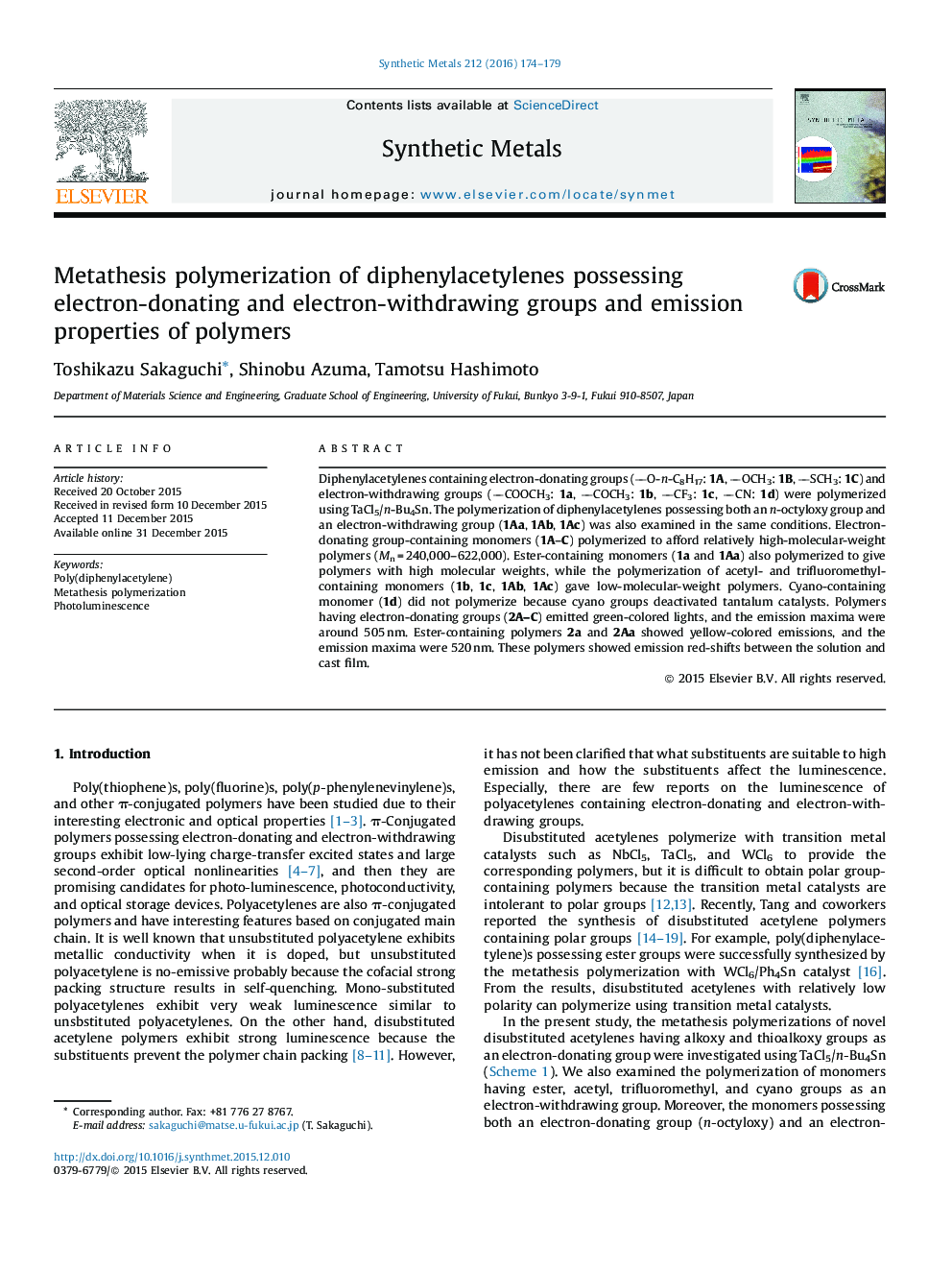| Article ID | Journal | Published Year | Pages | File Type |
|---|---|---|---|---|
| 1440302 | Synthetic Metals | 2016 | 6 Pages |
•Polyacetylenes with electron-donating and -withdrawing groups were synthesized.•Acetyl and cyano groups deactivated the catalyst for metathesis polymerization.•Emission spectrum red-shifted by introduction of ester groups.
Diphenylacetylenes containing electron-donating groups (O-n-C8H17: 1A, OCH3: 1B, SCH3: 1C) and electron-withdrawing groups (COOCH3: 1a, COCH3: 1b, CF3: 1c, CN: 1d) were polymerized using TaCl5/n-Bu4Sn. The polymerization of diphenylacetylenes possessing both an n-octyloxy group and an electron-withdrawing group (1Aa, 1Ab, 1Ac) was also examined in the same conditions. Electron-donating group-containing monomers (1A–C) polymerized to afford relatively high-molecular-weight polymers (Mn = 240,000–622,000). Ester-containing monomers (1a and 1Aa) also polymerized to give polymers with high molecular weights, while the polymerization of acetyl- and trifluoromethyl-containing monomers (1b, 1c, 1Ab, 1Ac) gave low-molecular-weight polymers. Cyano-containing monomer (1d) did not polymerize because cyano groups deactivated tantalum catalysts. Polymers having electron-donating groups (2A–C) emitted green-colored lights, and the emission maxima were around 505 nm. Ester-containing polymers 2a and 2Aa showed yellow-colored emissions, and the emission maxima were 520 nm. These polymers showed emission red-shifts between the solution and cast film.
Graphical abstractFigure optionsDownload full-size imageDownload as PowerPoint slide
